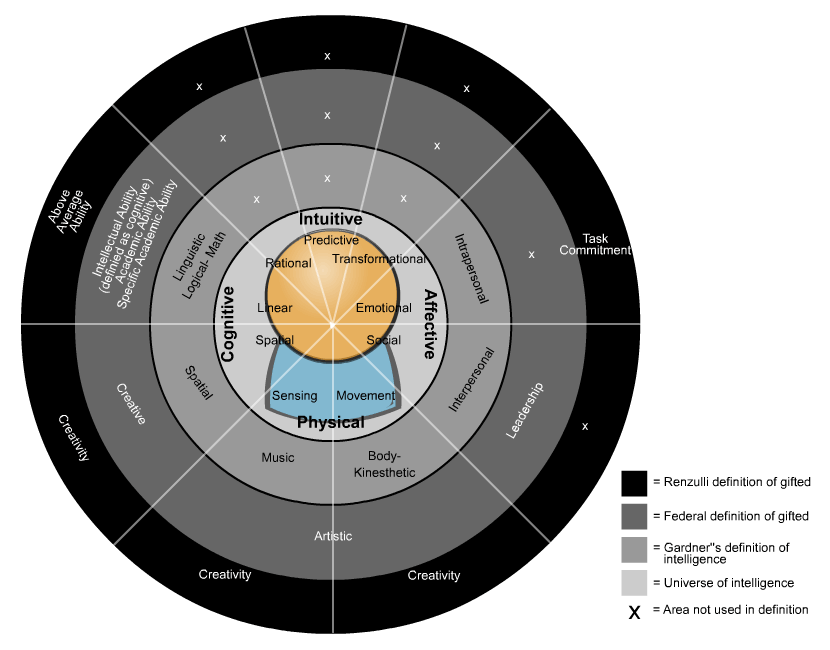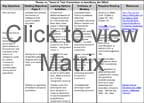Weekly Objectives
In this week you will...
- examine the various definitions of giftedness.
- identify and describe cognitive and affective behaviors of gifted students.
- explore characteristics of giftedness and the possible problems associated with these characteristics.
- investigate the difference between potential and performance as it relates to giftedness.
Who, What, Why?
Defining Giftedness
In 1971, U.S. Commissioner of Education, S. P. Marland, Jr. reported to Congress on the status of the gifted and talented in the United States. The report so enhanced the trend in gifted education that it still is made reference to today. The Marland Report pointed out the misunderstandings and identified the inadequate provisions found in the field of gifted education and resulted in the establishment of the U. S. Office of Gifted and Talented. The Marland Report defined gifted children as:
“Gifted and talented children are those identified by professionally qualified persons who, by virtue of outstanding abilities, are capable of high performance. These children require differential educational programs and/or services beyond those provided by the regular school program in order to realize their contribution to self and the society.
Children capable of high performance include those with demonstrated achievement and/or potential ability in any of the following areas, singly or in combination:
- General intellectual ability
- Specific academic aptitude
- Creative or productive thinking
- Leadership ability
- Visual and performing arts
- Psychomotor ability”
Since 1974, Florida has mandated services to gifted students. Dr. Elinor Elfner from the Bureau of Education for Exceptional Students Representative to the National Commission on Excellence in Education, outlined the three basic principles necessary for quality and excellence in programs for gifted:
- A program must have a strong foundation in the basic education system
- A program must state policies and standards to provide the necessary leadership for program development at the local level
- A program must have special incentives to continue to work towards excellence
The definition passed by Congress in 1981 states that gifted and talented children are those, “who give evidence of high performance capabilities in intellectual, creative, artistic areas, in leadership capability or specific academic fields, and who require services or activities not ordinarily provided by the school in order to fully develop such capabilities.” (Section 582)
For more information, visit What is Giftedness?
“Giftedness is a biologically rooted concept, a label for a high level of intelligence that results from the advanced and accelerated integration of functions within the brain, including physical sensing, emotions, cognition and intuition. Such advanced and accelerated function may be expressed through abilities such as those involved in cognition, creativity, academic aptitude, leadership, or the visual and performing arts.” (Clark, 1983)
This graphic provides a visual representation showing the definitions of intelligence and giftedness and their relationship to the areas of brain function.
As time progresses the definition of what constitutes giftedness evolves. There are certain threads of similarity woven through, but science, research, observation, and opinion continually play a role in identifying who is gifted.


